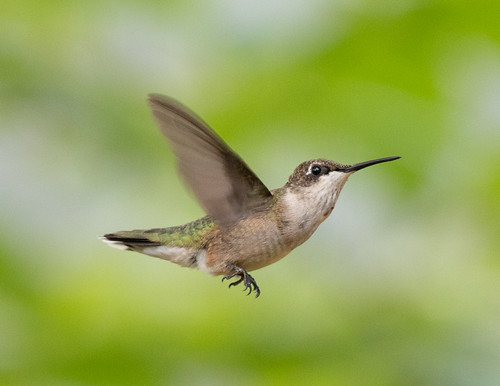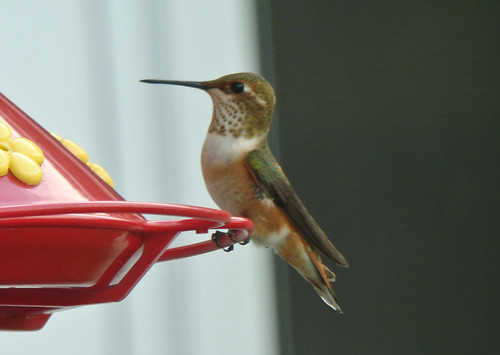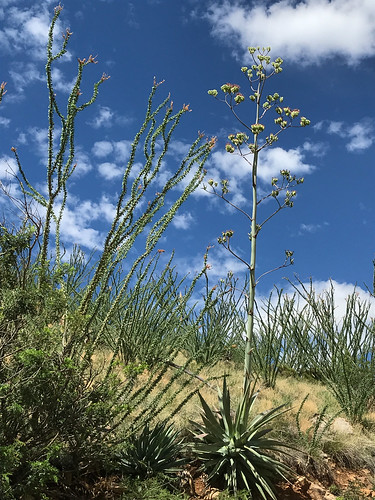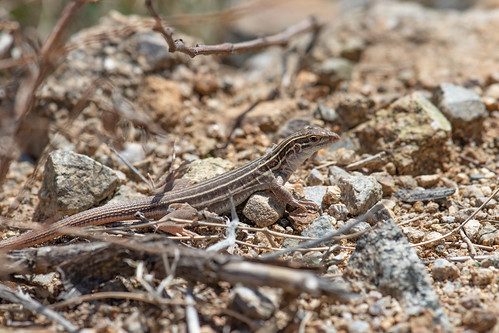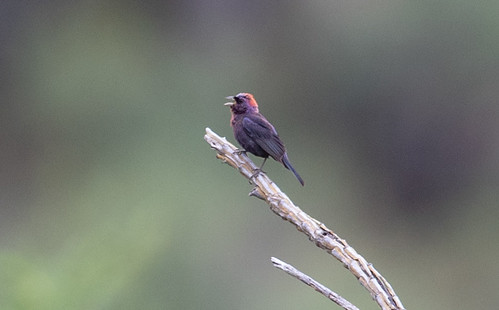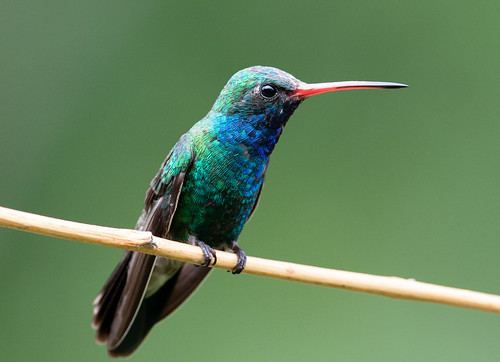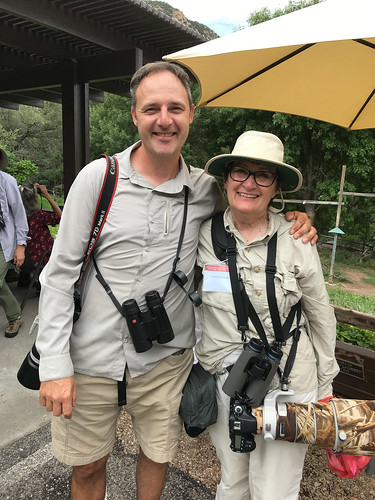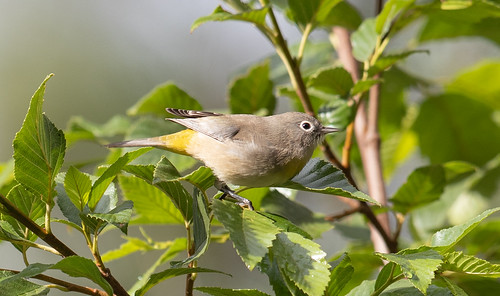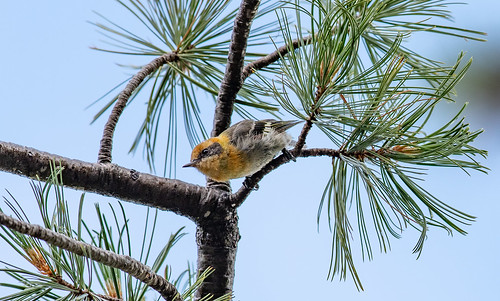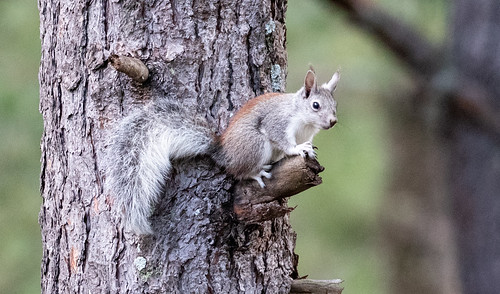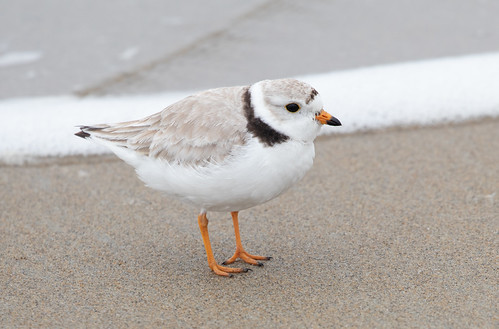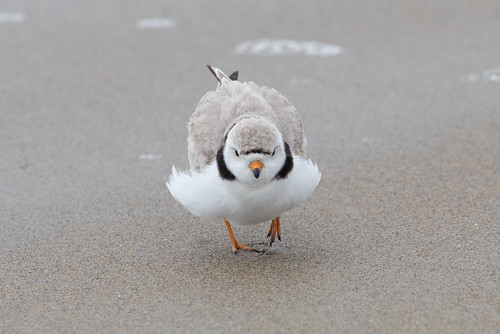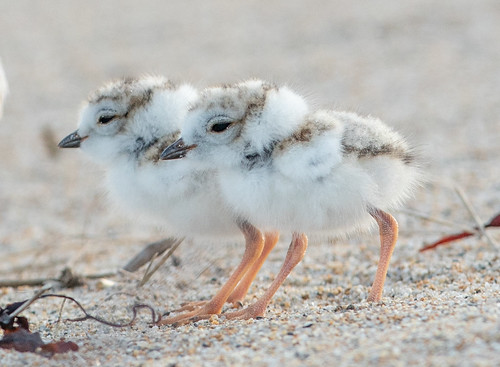Now that most adult male hummingbirds are gone, we’re left mostly with adult females and young of both sexes, and the only Ruby-throats with brilliant red throats still remaining are stragglers. But it’ll be tricky to notice exactly when the adult females disappear—young males as well as females have white on the outer tips of the tail and lack red throats. A handful of brilliant iridescent gorget feathers may have already grown in on some young males, but older adult females may have a few ruby throat feathers, too. Young birds have tiny little marks called corrugations on the bill, lost as the bill reaches full size and hardens, but this is extremely difficult to see except by bird banders holding the bird in hand, and these have already been lost by some of the first-hatched birds this year.
Every now and then an outlier hummingbird turns up—in Minnesota and Wisconsin, the most likely vagrant is the Rufous Hummingbird.
Both states have also had isolated cases where an Anna’s Hummingbird and a Mexican Violet-ear were found. Wisconsin has had at least one Green-breasted Mango and one Broad-billed and Buff-bellied Hummingbird show up, while Costa’s and Calliope Hummingbirds have been seen in Minnesota. The 3 records of Magnificent Hummingbird in Minnesota, all from the month of June, were from before the species was split—I’m not sure if there is enough data for the Minnesota Ornithological Records Committee to make a decision whether those were Rivoli’s or Talamanca, and the species was never reported to eBird.
Because the Ruby-throat really is the only hummingbird that nests in the Midwest, it’s easy to assume that every hummingbird at our feeders is a Ruby-throat, and that’s a fair assumption. Chances are that every time you carefully scrutinize every single hummingbird in your yard, you’re only going to come up with Ruby-throats. But the only absolute guarantee is that if you never scrutinize every single hummingbird, you’re never going to see a rare one. The one year that I left my hummingbird feeders out until November, a Rufous Hummingbird actually did show up and spent two weeks in my yard before heading on.
Thanks to the Internet, more and more unqualified people are expounding on the best, or the only, proper mixtures to offer hummingbirds. Some people say hummingbirds won’t touch anything but cane sugar, others swear by beet sugar—the banders I’ve talked to say the birds really don’t care, and I’ve never noticed a difference in my own yard. An excellent rule is to use one cup of sugar to four cups of water. That’s about the average concentration of flower nectar, but natural flowers vary, from about a 1:5 ratio up to about a 1:3 ratio. If you’re mindful and keeping track of weather conditions, upping your sugar water strength to one cup of sugar to three cups of water is a good thing during cool or rainy conditions, especially when birds need a boost as natural food sources dwindle. During hot, dry conditions when hummingbirds may get dehydrated without enough water to metabolize the sugar, it’s a good idea to lower the concentration to one cup of sugar per five cups of water, but the 1:4 average is fine any time.
Virtually every hummingbird will be gone from up here by the second week of September or so. Individuals never, ever linger simply because a feeder is there—their urge to migrate is far, far stronger than the appeal of even the Midwest’s finest feeding stations. When a Ruby-throat does stick around late, it’s virtually always a young bird from a late hatching, still getting its body in shape. As we start experiencing killing frosts and sources of natural nectar disappear, our feeders really can help keep these birds alive—I’ve a couple of times had young Ruby-throats show up as late as early October. But if you do leave the feeders out there just in case of a straggler, make sure you keep changing the sugar water. And check those stragglers, because by October, the probability rises that a hummingbird up here is of those outlier species. Autumn hummingbird watching is like a box of chocolates—you never know what you’re going to get, but it’s certain to be sweet.
